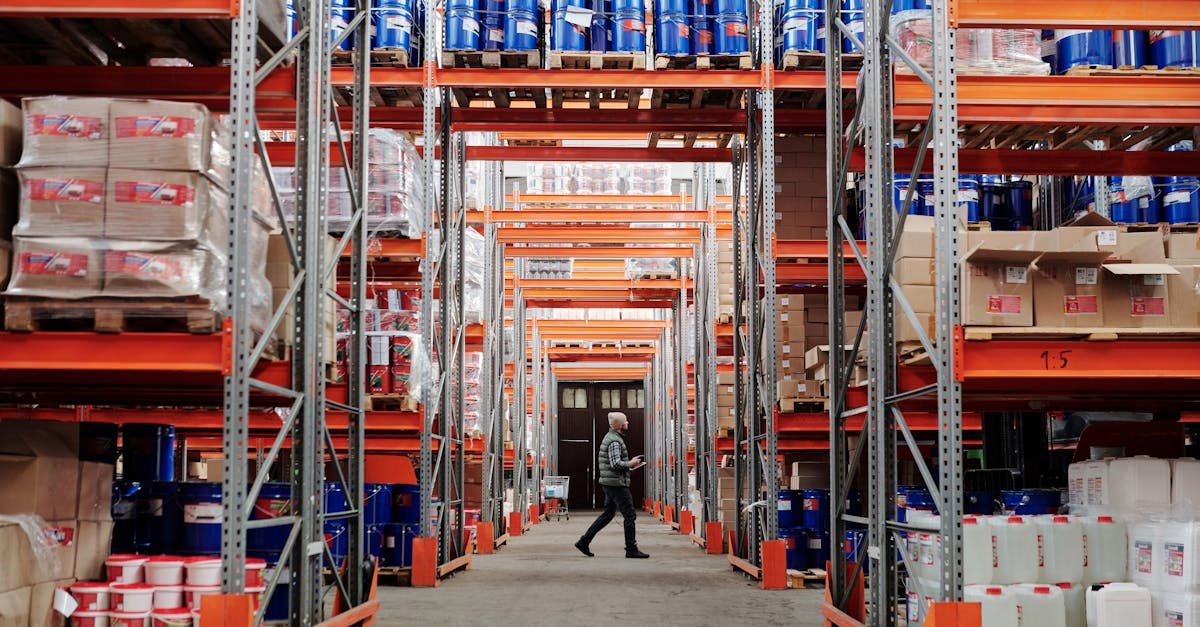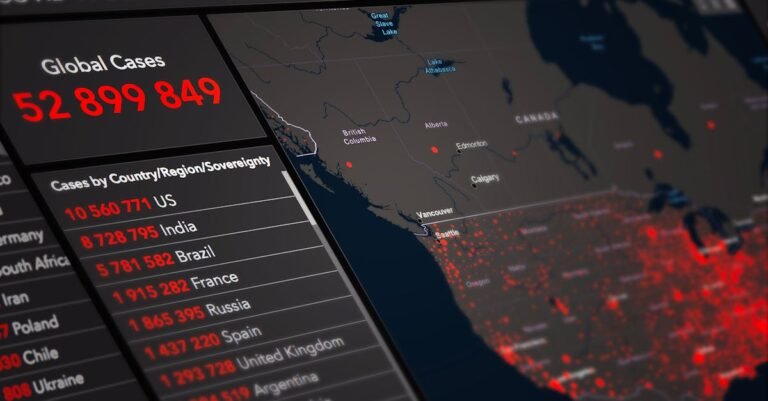Tired of Lost Packages and Sketchy Goods? Meet the Altcoins Fixing Supply Chains!
Ever ordered something online, tracked it obsessively, only for it to vanish into thin air? Or maybe you’ve bought something expensive, like organic food or fancy electronics, and had that nagging feeling… is this really what I paid for? You’re not alone. Traditional supply chains, the complex networks that get products from raw material to your doorstep, are often messy, opaque, and frustratingly inefficient. Think of it like a giant game of telephone played by hundreds of different companies across the globe, each with their own systems, paperwork, and priorities. It’s no wonder things get lost, delayed, counterfeited, or simply aren’t what they claim to be.
For years, we’ve just sort of accepted this as the cost of global trade. But what if there was a better way? What if we could have a system where every step a product takes is recorded transparently, securely, and in a way that everyone involved can trust? That’s where the magic of blockchain technology comes in, and more specifically, where certain cryptocurrencies, or altcoins, are stepping up to revolutionize how goods move around the world. Forget just thinking about crypto as digital money; some of these digital assets are the fuel powering groundbreaking supply chain solutions. Ready to peek behind the curtain and see how these innovative projects are untangling the global logistics knot? Let’s dive in!
Why Our Supply Chains Are Crying Out for a Blockchain Makeover
Before we jump into the specific altcoins making waves, let’s really understand *why* blockchain is such a game changer for supply chains. Imagine the journey of your morning coffee beans. They might start on a small farm in Colombia, get processed, shipped across the ocean, roasted in Italy, packaged in Germany, and finally land on your local supermarket shelf. That journey involves dozens of players: farmers, cooperatives, exporters, shipping lines, customs officials, warehouses, distributors, retailers. Each one keeps their own records, often on paper or in isolated digital systems that don’t talk to each other. This creates a whole host of problems.
First, there’s a massive lack of transparency. As a consumer, you rarely have a clear view of where your product truly came from or the conditions under which it was produced. Even businesses within the chain often struggle to see what’s happening upstream or downstream. Did the organic certification get verified? Was the temperature maintained correctly during shipping for those sensitive pharmaceuticals? Who handled the package last before it got damaged? Getting answers can be like pulling teeth, involving endless emails, phone calls, and digging through disparate records.
This lack of transparency breeds inefficiency. Delays happen because paperwork gets lost or requires manual verification at multiple points. Disputes arise over who is responsible when something goes wrong, leading to costly investigations and strained relationships between partners. Think about recalls – identifying the exact batches affected and where they ended up can be a nightmare with siloed data, costing companies millions and potentially endangering consumers.
Then there’s the pervasive issue of counterfeiting and fraud. From fake luxury handbags to substandard aircraft parts or even dangerous counterfeit medicines, illicit trade is a multi trillion dollar problem. Traditional supply chains make it relatively easy for bad actors to introduce fake goods or tamper with products along the way because there’s no single, unchangeable source of truth tracking the item’s journey and authenticity.
Data management itself is a huge challenge. Companies use different software, different data formats, and different processes. Integrating all this information to get a complete picture is incredibly complex and expensive, if not impossible. This means valuable insights that could optimize routes, predict demand, or improve sustainability are often lost in the digital noise.
So, how does blockchain help? Think of blockchain as a shared, secure, digital notebook or ledger that everyone in the supply chain can access (with permission, of course). Here’s the breakdown:
- Immutability: Once information (like a product’s origin, a quality check, or a change of custody) is recorded on the blockchain, it’s practically impossible to change or delete it. This is thanks to cryptography and the decentralized nature of the network. No single entity controls the ledger, so no one can secretly alter the records to cover tracks or commit fraud. This builds incredible trust.
- Transparency: While not always fully public (permissions can be set), relevant parties in the supply chain can be granted access to see the same information in real time. A retailer can verify the organic certification directly from the source data recorded by the farmer or certifier. A consumer could potentially scan a QR code and see the key steps in a product’s journey.
- Traceability: By recording each step (or “transaction”) as a product moves through the supply chain onto the blockchain, you create a verifiable digital trail. This allows for precise track and trace capabilities, pinpointing exactly where an item is, where it’s been, and who handled it. This is invaluable for recalls, quality control, and proving authenticity.
- Security: Blockchain uses advanced cryptographic techniques to secure data. Its decentralized nature also means there’s no single point of failure; hacking one computer doesn’t compromise the entire network’s history.
- Efficiency & Automation (Smart Contracts): Many blockchains support “smart contracts.” These are like self executing digital agreements. For example, a smart contract could automatically release payment to a supplier once a shipment’s arrival is confirmed on the blockchain via an IoT sensor, eliminating delays and paperwork. Or it could automatically trigger an alert if a temperature sensitive shipment goes outside the required range.
Now, you might be wondering, “Why do we need specific altcoins for this? Can’t companies just use a private blockchain?” That’s a great question! While private blockchains exist, public or consortium blockchains powered by specific cryptocurrencies offer several advantages, particularly for creating open, neutral, and incentivized ecosystems:
- Network Effects: Public blockchains aim to create large, open networks where many different companies can participate using a common standard, fostering wider collaboration and data sharing than closed, private systems might allow.
- Incentivization: The native altcoin often plays a crucial role in incentivizing participation and good behavior. For instance, companies might need to stake (lock up) tokens to run nodes that validate transactions, earning rewards for doing so. This helps secure the network. Users might pay small transaction fees in the token to record data on the blockchain, creating demand for the token and funding network operations.
- Governance: Token holders sometimes get a say in the future development and rules of the blockchain protocol, making it more democratic and adaptable than a system controlled by a single corporation.
- Funding & Development: The altcoin can be used to fund the initial development and ongoing improvement of the blockchain platform itself.
Essentially, these specialized supply chain crypto projects aren’t just building databases; they’re building entire ecosystems designed specifically to tackle the unique challenges of global logistics. The altcoin is often the economic engine that makes the whole system work, ensuring security, participation, and continuous development. It transforms the blockchain from just a technological tool into a living, breathing, economically viable network for supply chain management. The potential benefits are enormous: reduced costs, faster delivery times, fewer errors, less fraud, enhanced brand trust, and even better sustainability tracking. It’s about creating supply chains that are not just efficient, but also transparent, trustworthy, and responsive to the needs of both businesses and consumers.
Meet the Trailblazers: Top Altcoins Powering Supply Chain Solutions
Okay, now that we understand the ‘why’ behind blockchain supply chain technology, let’s get to the exciting part: the specific altcoins that are leading the charge. While many projects touch on logistics, a few stand out for their dedicated focus, real world traction, and innovative approaches. We’re going to take a closer look at two of the most prominent players in this space: VeChain (VET) and OriginTrail (TRAC). These aren’t just theoretical concepts; they are actively being used by businesses today to solve tangible problems.
VeChain (VET): The Enterprise Powerhouse
When you talk about blockchain logistics and enterprise adoption, VeChain is almost always part of the conversation. Launched initially in 2015, VeChain has carved out a significant niche by focusing specifically on making blockchain technology accessible and practical for businesses, offering what they call Blockchain as a Service (BaaS). Their goal is to lower the barrier to entry for companies wanting to integrate blockchain into their existing operations, particularly for supply chain management and anti counterfeiting.
One of VeChain’s key differentiators is its two token system, designed to separate the speculative aspect of cryptocurrency from the actual cost of using the network:
- VeChain Token (VET): This is the primary token, representing value or “smart money” within the VeChainThor blockchain ecosystem. Holding VET allows you to generate the second token, VTHO. It’s also used for staking in nodes that help secure the network.
- VeThor Token (VTHO): This token acts as the “gas” or energy required to power transactions and run smart contracts on the VeChainThor blockchain. When a company wants to record data (like tracking a shipment or verifying a product’s authenticity), they spend VTHO. This model aims to keep transaction costs relatively stable and predictable for businesses, as the supply of VTHO can be adjusted based on demand, unlike relying solely on a potentially volatile primary token for operational costs.
This dual token economy is fundamental to VeChain’s strategy for enterprise adoption. Businesses need predictable operational expenses, and separating the cost of network usage (VTHO) from the main value transfer and staking token (VET) helps achieve that.
VeChain’s technology, the VeChainThor blockchain, uses a consensus mechanism called Proof of Authority (PoA). Unlike Bitcoin’s Proof of Work (which requires massive computing power) or typical Proof of Stake, PoA relies on a limited number of pre approved validators (Authority Masternodes) to confirm transactions. These validators are known, reputable entities (often businesses or organizations with a vested interest in the network’s integrity), making the network highly efficient and scalable, capable of handling a large volume of transactions suitable for enterprise level supply chains. While some argue PoA is less decentralized than PoW or PoS, VeChain maintains it provides the right balance of performance, security, and governance control needed for business applications.
Where VeChain truly shines is in its real world use cases and partnerships. They haven’t just built technology; they’ve actively worked with major companies to implement it:
- Anti Counterfeiting: VeChain is heavily used in the luxury goods sector. High end brands embed NFC or RFID chips linked to the VeChain blockchain in their products. Customers can scan the chip with their smartphone to verify the item’s authenticity and trace its history, combating fakes. They’ve worked with brands in fashion and premium wine industries.
- Food Safety & Traceability: Perhaps their most famous partnership is with Walmart China. Using VeChainThor, Walmart tracks food products (like pork) through their supply chain, allowing consumers to scan QR codes in store to see the product’s origin, logistics process, inspection reports, and other details, significantly enhancing food safety trust. They’ve also worked with companies like Bright Foods and FoodGates.
- Automotive: VeChain has collaborated with Groupe Renault to create a digital car maintenance book, securely storing vehicle data like mileage and repair history on the blockchain, preventing odometer fraud in the second hand car market. They’ve also explored partnerships with BMW for verifying component origins.
- Carbon Tracking & Sustainability: VeChain technology can be used to track carbon emissions throughout a product’s lifecycle, helping companies manage their environmental footprint and provide verifiable proof of sustainable practices. Partnerships with entities like DNV GL (a global quality assurance and risk management company) add credibility to these solutions.
VeChain’s strengths lie in its strong enterprise focus, impressive roster of real world partnerships (including PwC, DNV GL), a dedicated BaaS platform (ToolChain™) simplifying adoption, and a well thought out economic model. They provide tangible solutions for businesses struggling with transparency and counterfeiting. However, potential challenges include the perceived centralization of the PoA model, a degree of complexity in the dual token system for newcomers, and its success being somewhat dependent on the continued buy in and expansion from its large enterprise partners. Overall, VET crypto represents a serious contender aiming to be the backbone for enterprise track and trace crypto solutions.
OriginTrail (TRAC): The Decentralized Knowledge Graph
OriginTrail takes a different, yet equally fascinating, approach to solving supply chain data problems. Instead of focusing solely on putting data *onto* a single blockchain, OriginTrail focuses on connecting *existing* data silos and making supply chain information discoverable, verifiable, and interconnected using something they call the Decentralized Knowledge Graph (DKG). Think of it less like a single database and more like a Google for supply chain data, built on Web3 principles.
The core problem OriginTrail tackles is interoperability. Most companies already have their own internal systems (ERPs, WMS, etc.). Forcing everyone to migrate to a single new blockchain platform is often impractical and expensive. OriginTrail’s DKG acts as a neutral middleware layer that can link data from various sources (legacy systems, private blockchains, IoT devices, public blockchains) without requiring companies to change their core infrastructure. It focuses on connecting the *dots* of data rather than forcing all data into one *place*.
How does it work? Businesses publish important data points (like batch numbers, shipping events, certifications) related to their supply chains to the OriginTrail network. This data isn’t typically stored directly on a public blockchain (which can be slow and expensive for large datasets), but rather on the decentralized OriginTrail network nodes. What *is* stored on public blockchains are immutable fingerprints or hashes of this data, along with information about where to find the full data set within the DKG. This creates a verifiable link: you can prove the data hasn’t been tampered with (using the blockchain fingerprint) and you know where to securely access it (via the DKG).
OriginTrail is multi chain, meaning its DKG operates across several public blockchains simultaneously, currently including Ethereum, Polygon, and Gnosis Chain (formerly xDai). This provides flexibility and resilience, allowing users to choose the blockchain that best suits their needs for security, cost, and speed. This multi chain approach is key to its vision of being a universal, neutral layer connecting diverse digital ecosystems.
The native token, TRAC, is an essential part of this ecosystem:
- Staking: Node runners who host data and perform computations on the DKG must stake TRAC tokens as collateral, ensuring they act honestly and reliably. They earn TRAC rewards for their services.
- Payment: Companies that want to publish data to the DKG or query data from it pay fees in TRAC to the node runners who provide these services. This creates economic incentives for running nodes and ensures the network’s sustainability.
- Publishing & Discoverability: TRAC is used to ‘light up’ data on the DKG, making it discoverable and accessible for a set period. Think of it like paying for hosting and indexing services in the decentralized world.
OriginTrail places a strong emphasis on adhering to global data standards, particularly GS1 standards (like EPCIS used for tracking events in supply chains). This focus on standards makes it easier for existing businesses to integrate OriginTrail, as they can leverage data formats they already use. Their solutions are particularly relevant for industries with complex compliance requirements and data sharing needs, such as:
- Food & Beverage: Providing traceability and transparency for safety and quality assurance, connecting data from farm to fork across multiple stakeholders. Initiatives like the SCAN Trusted Factory project leverage OriginTrail.
- Pharmaceuticals: Ensuring compliance with track and trace regulations, verifying drug authenticity, and monitoring cold chain logistics.
- Construction & Aviation: Tracking materials, components, and maintenance records where provenance and compliance are critical. BSI (British Standards Institution) has partnered with OriginTrail.
OriginTrail’s strengths are its unique focus on supply chain data interoperability through the DKG, its standards based approach facilitating integration, its flexible multi chain architecture, and a clear utility for the TRAC token within its ecosystem. It addresses the reality that data is often fragmented across many systems. Potential challenges include the technical complexity of the DKG concept for some users, building widespread adoption across diverse industries, and competing in a space where simpler, single blockchain solutions might seem initially easier to grasp. However, for complex, multi enterprise supply chains needing to connect disparate data securely, OriginTrail offers a powerful and innovative solution.
Both VeChain and OriginTrail demonstrate the incredible potential of specialized altcoins to tackle real world supply chain problems. They offer different approaches – VeChain focusing on enterprise BaaS and direct blockchain recording, OriginTrail focusing on connecting existing data via a decentralized knowledge graph – but both aim for the same goal: making supply chains more transparent, efficient, and trustworthy through the power of blockchain and dedicated crypto tokens.
Choosing Your Champion: How to Evaluate Supply Chain Altcoins
So, we’ve seen the problems in traditional supply chains and explored how innovative projects like VeChain and OriginTrail are using blockchain and their native altcoins (VET and TRAC) to offer solutions. But these aren’t the only players, and new projects emerge constantly. If you’re interested in this space, whether as a potential investor, a business looking for solutions, or just a curious tech enthusiast, how do you evaluate these supply chain crypto projects? What separates a promising initiative from mere hype? It requires looking beyond just the token price and digging into the fundamentals.
Here are some key criteria to consider when assessing the potential and viability of an altcoin focused on supply chain solutions:
1. Real World Adoption and Partnerships: Is Anyone Actually Using It?
This is arguably the most critical factor. A brilliant technological concept is useless if no one adopts it. Look for concrete evidence of real world usage and meaningful partnerships.
- Questions to Ask: Are actual businesses implementing the technology in their live operations, or is it just pilot programs and proofs of concept? Who are their partners? Are they significant players in relevant industries (logistics, retail, manufacturing, pharma)? Are these partnerships just marketing announcements, or do they involve genuine integration and usage?
- What to Look For: Case studies, press releases detailing *specific* implementations (like VeChain’s work with Walmart China or DNV GL), testimonials from actual business users, confirmation from the partner company’s side (not just the crypto project’s claims). A growing list of diverse clients across different sectors is a strong positive signal. Be wary of projects that only boast about potential partnerships without showing tangible results.
2. Technology and Scalability: Can It Handle the Load?
Supply chains generate massive amounts of data and require fast transaction processing. The underlying blockchain technology must be robust, secure, and scalable enough to handle real world demands.
- Questions to Ask: What consensus mechanism does it use (Proof of Work, Proof of Stake, Proof of Authority, etc.)? What are the trade offs in terms of speed, security, and decentralization? Can the network handle thousands or millions of transactions per day without getting congested or prohibitively expensive? Does it have solutions for scaling (like Layer 2 protocols or efficient data handling like OriginTrail’s DKG)? Is the technology secure against common attack vectors?
- What to Look For: Clear documentation (whitepaper, technical papers) explaining the architecture. Performance metrics (transactions per second, finality time) – though be critical of theoretical maximums versus proven real world performance. Information on security audits conducted by reputable third party firms. A pragmatic approach that balances decentralization with the performance needs of businesses (like VeChain’s PoA or OriginTrail’s multi chain strategy).
3. Tokenomics: Does the Altcoin Have Real Utility?
The native altcoin shouldn’t just be a speculative asset; it needs a clear purpose and function within the ecosystem that drives demand based on network usage.
- Questions to Ask: What is the specific role of the token? Is it used for paying transaction fees (gas), staking to secure the network, participating in governance, accessing specific services, or incentivizing data sharing? Is there a clear link between the usage of the supply chain solution and the demand for the token? Is the token supply inflationary or deflationary? Is the distribution fair?
- What to Look For: A well defined utility described in the project’s documentation. Mechanisms that tie token value to platform adoption (e.g., more transactions = more VTHO burned for VeChain; more data stored/queried = more TRAC used for OriginTrail). A sustainable economic model that rewards participants (node runners, stakers) fairly without excessive inflation. Transparency regarding token allocation and distribution. Avoid tokens that seem to exist solely for fundraising or speculation with no integral function.
4. Team and Development Activity: Who’s Behind the Wheel?
A project is only as strong as the team building it and their ability to execute on their vision.
- Questions to Ask: Who are the core team members? What is their background and experience (in blockchain, supply chain, business development)? Are they transparent about their identities? Is the project under active development? How frequently do they release updates or new features? Do they engage with their community?
- What to Look For: Publicly available information on the team (LinkedIn profiles, official website bios). Evidence of relevant expertise. Active GitHub repositories showing ongoing code development. Regular communication through blogs, social media, and community channels (like Discord or Telegram). A clear roadmap with achievable milestones and a track record of delivering on promises.
5. Interoperability and Standards Compliance: Does It Play Well With Others?
Supply chains involve countless different systems. A solution that can integrate with existing infrastructure and standards is far more likely to gain adoption than one requiring a complete overhaul.
- Questions to Ask: Can the platform connect with traditional enterprise systems (like ERPs, WMS)? Does it support industry data standards (like GS1, VDA)? Can it interact with other blockchains or data sources if needed?
- What to Look For: Focus on APIs (Application Programming Interfaces) for easy integration. Mention of adherence to specific industry standards (like OriginTrail’s emphasis on GS1). A flexible architecture that doesn’t lock users into a completely closed ecosystem. Partnerships with middleware providers or system integrators.
6. Community and Ecosystem: Is There a Buzz?
A strong and active community can be a powerful indicator of a project’s health and potential. It includes developers, users, partners, and enthusiasts.
- Questions to Ask: How large and engaged is the project’s community on social media and forums? Are developers actively building applications or tools on top of the platform? Is there a supportive ecosystem emerging around the project?
- What to Look For: Active discussions, helpful community members, third party developers contributing to the ecosystem, educational resources created by the community, positive sentiment (while being mindful of excessive hype).
Doing Your Own Research (DYOR)
Evaluating these factors requires some legwork. Don’t rely solely on social media hype or sensationalist headlines. Dive deeper:
- Read the project’s official website and whitepaper thoroughly.
- Check for detailed case studies and partnership announcements.
- Look at the team’s background.
- Explore their GitHub activity if you’re technically inclined.
- Join their official community channels (Discord, Telegram) to observe discussions and ask questions.
- Look for independent analysis from reputable sources (but always be critical).
Investing in any cryptocurrency carries risks, and supply chain crypto projects are no different. The technology is still evolving, adoption takes time, and competition is fierce. However, by carefully evaluating projects based on tangible factors like adoption, technology, token utility, team, and interoperability, you can make more informed decisions and better understand the potential of these altcoins to truly revolutionize global logistics.
The Future is Transparent and Connected
We’ve journeyed from the frustrations of traditional supply chains – the lost packages, the questionable origins, the infuriating delays – to the exciting potential of blockchain technology. We saw how core blockchain features like immutability, transparency, and traceability offer powerful solutions to these age old problems. More importantly, we explored how specialized altcoins like VeChain (VET) and OriginTrail (TRAC) are not just theoretical concepts but are actively building the infrastructure for this revolution. VeChain brings its enterprise focus and BaaS model, driving adoption with major partners, while OriginTrail tackles data interoperability head on with its innovative Decentralized Knowledge Graph. Both highlight the critical role specific cryptocurrencies play in powering and incentivizing these new ecosystems for blockchain logistics.
We also discussed the importance of looking beyond the hype when evaluating these projects. Focusing on real world adoption, sound technology, useful tokenomics, a strong team, and interoperability provides a solid framework for assessing the potential of any supply chain crypto. Remember, the goal is to find projects building sustainable solutions that deliver real value to businesses and consumers alike.
Start Your Exploration into Supply Chain Crypto
The intersection of blockchain and supply chain management is one of the most practical and impactful applications of this technology. It promises a future where we can trust the products we buy, where businesses operate more efficiently, and where global trade becomes more transparent and secure. The journey is just beginning, but the potential is immense.
Feeling intrigued? Don’t stop here! I encourage you to dive deeper. Learn more about the specific projects mentioned, like VeChain and OriginTrail, by visiting their official websites and reading their documentation. Explore other potential players in the track and trace crypto space. Follow relevant news sources and analysts who cover blockchain adoption in enterprise. Join online communities to engage in discussions and ask questions. The more you learn, the better equipped you’ll be to understand this rapidly evolving field. Whether you’re considering it from a business perspective, an investment angle, or simply out of technological curiosity, exploring the world of best altcoins for supply chain solutions is a fascinating glimpse into the future of commerce.









